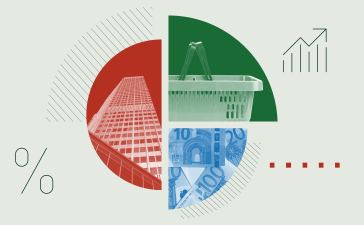By Kyunghoon Kim
In 2022, Indonesia achieved the World Bank’s upper-middle-income status, a noteworthy accomplishment amid challenging conditions. To cement its position, the government is bolstering its developmental role by mobilising state-owned entities. But Jakarta will have to strengthen its governance institutions to ensure the sustainability of this strategy.
The most striking feature of the government’s expanded influence in the Indonesian economy is state-owned enterprises (SOEs). Over the last decade, the government has propelled SOEs’ growth through large capital injections and state-directed loans, reduced dividend payouts and numerous development project assignments.
As a result, the total assets of these companies under the Ministry of State-Owned Enterprises have more than doubled in the past decade, surpassing US$648 billion (Rp 10 quadrillion) in 2021 and US$750 billion (Rp 11.6 quadrillion) in 2023. These assets as a percentage of GDP have increased from 43 per cent in 2014 to 55 per cent in 2023, nearing pre-Asian financial crisis levels.
SOEs in Indonesia operate across diverse sectors including energy, telecommunications, minerals, plantations, transportation, hospitality and more. They also manufacture fertilisers, cement, steel, trains and even airplanes.
SOEs play a pivotal role in strengthening the country’s infrastructure. State-owned constructors such as Hutama Karya and Jasa Marga have focused on building toll roads and in the past decade have nearly tripled the length of toll roads built in the four decades prior to 2014.
Another significant aspect of Indonesia’s SOE policy is the establishment of state-owned holding companies. Despite the rapid growth of SOE assets, the number of companies under the SOE ministry dropped from 121 in 2014 to 70 in 2023. This reduction reflects the government’s strategy to form sectoral holding companies for economies of scale and synergies. Under this mechanism, the government shifts its shareholdings in state enterprises in a specific sector to the designated sectoral holding company.
A notable example is Mining Industry Indonesia (MIND ID), a holding company in mining, originally with four members. Over the past few years, it acquired stakes in Freeport Indonesia and Vale Indonesia. It is also playing an important role in fostering the mineral sector’s downstream industries. Following the export ban of nickel ores in 2020, MIND ID’s affiliated mining firm Aneka Tambang began to establish processing and refining facilities to enhance domestic value addition. MIND ID affiliates account for 50 per cent of ownership in the Indonesia Battery Corporation tasked with fostering the electric vehicle value chain.
The Indonesian government’s expanded role is also evident in the financial sector. State-owned banks, among the largest in the country, have seen their share of bank loans significantly risefrom 34 per cent in 2014 to 43 per cent in 2023. They are also major players in digital banking, having established a digital wallet service, LinkAja, in 2019 in cooperation with other SOEs. State-owned financial institutions also play important roles in Indonesia’s insurance, pension and securities industries.
To tackle development challenges, the government is increasingly mobilising specialised financial institutions, known as special mission vehicles. Assets of these institutions under the Ministry of Finance have more than quadrupled, from US$5.7 billion (Rp 88 trillion) in 2014 to US$23.5 billion (Rp 363 trillion) in 2023. The government has ramped up infrastructure investment, but due to fiscal constraints, it is also leveraging special mission vehicles for infrastructure financing.
One prime example is the Indonesia Investment Authority, the country’s sovereign wealth fund tasked with investing in productive assets like infrastructure. Sarana Multi Infrastruktur, a development bank that finances various projects, particularly in infrastructure, has also grown rapidly.
These examples show how Indonesia’s state-owned entities are playing an increasingly central role across the economy. While debates on the optimal level of government intervention continue, the expanding presence of state-owned entities is both a current reality and a future trajectory.
Indonesia is relatively late to the expansion of the state-owned sector. This means that Indonesia can learn from the mistakes of other countries that have had similar structural characteristics in their economies. In Brazil and Malaysia — electoral democracies with swelling state-owned sectors — the most significant corruption scandals have involved state-owned entities. These events have played a pivotal role in bringing down their respective governments.
It is imperative for Indonesia to enhance its governance of state-owned entities. Despite their impressive growth, governance mechanisms have not kept pace. Strengthening institutional capacities for monitoring and auditing state-owned entities and enhancing transparency through better access to information is crucial for reinforcing checks and balances and securing political legitimacy.
In particular, information regarding the fiscal and financial resources allocated to SOEs, their corporate and developmental performance, and details about their subcontractors should be readily accessible. Additionally, the government should provide clear rationales for appointing commissioners and directors of SOEs based on their qualifications. To accelerate governance reform, the government might consider listing a small portion of SOE shares while retaining a majority stake. These efforts are essential to ensuring the development strategy driven by state-owned entities is sustainable.
But government leaders often become short-sighted and lose interest in governance reform in favour of other priorities. This means Indonesian media and civil societies need to be vigilant. Watchdogs should continue highlighting the consequences of deteriorating transparency and the risks of corruption as SOEs grow in Indonesia’s economy.
- About the author: Kyunghoon Kim is associate research fellow at the Korea Institute for International Economic Policy
- Source: This article was published by East Asia Forum





